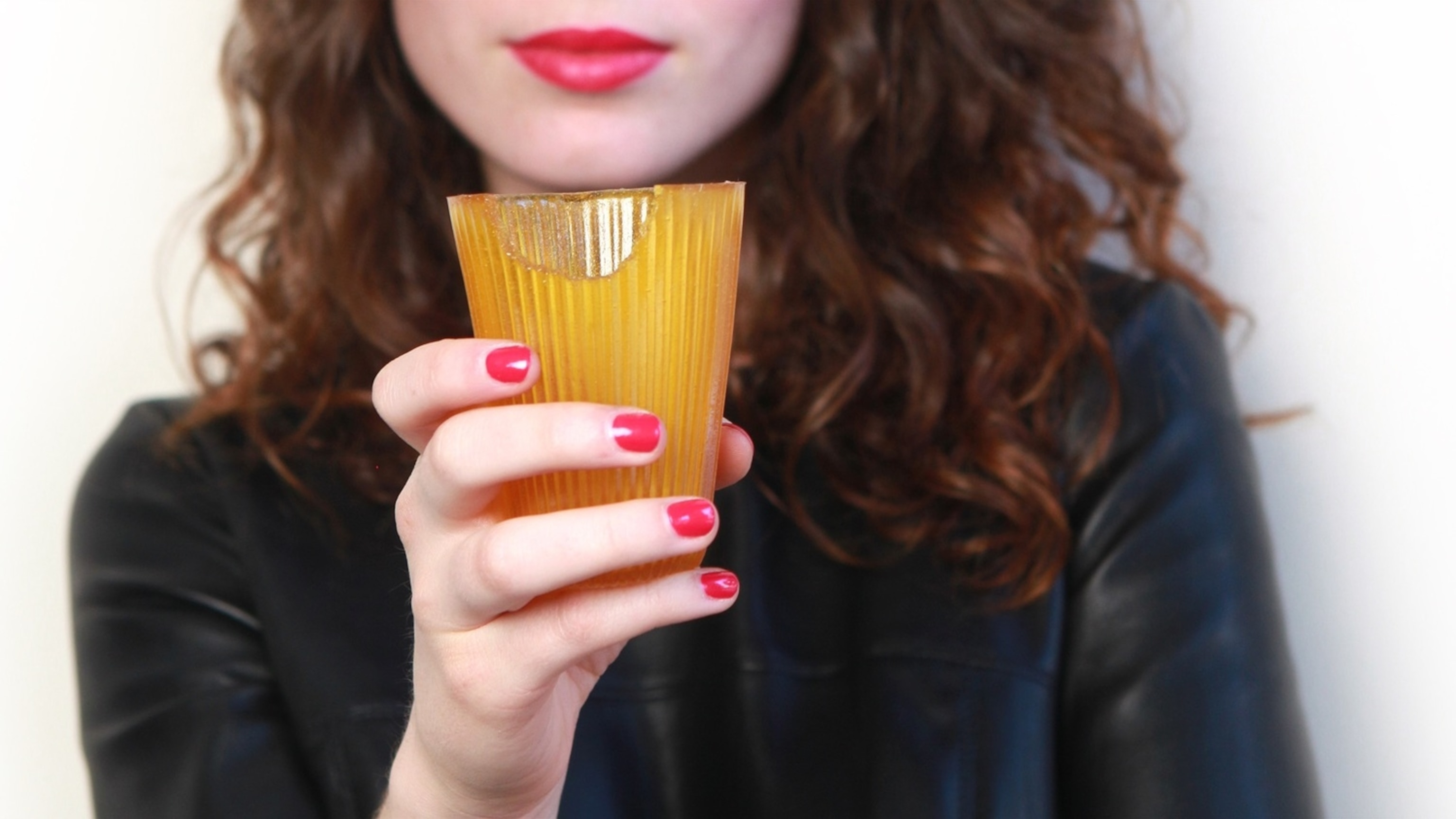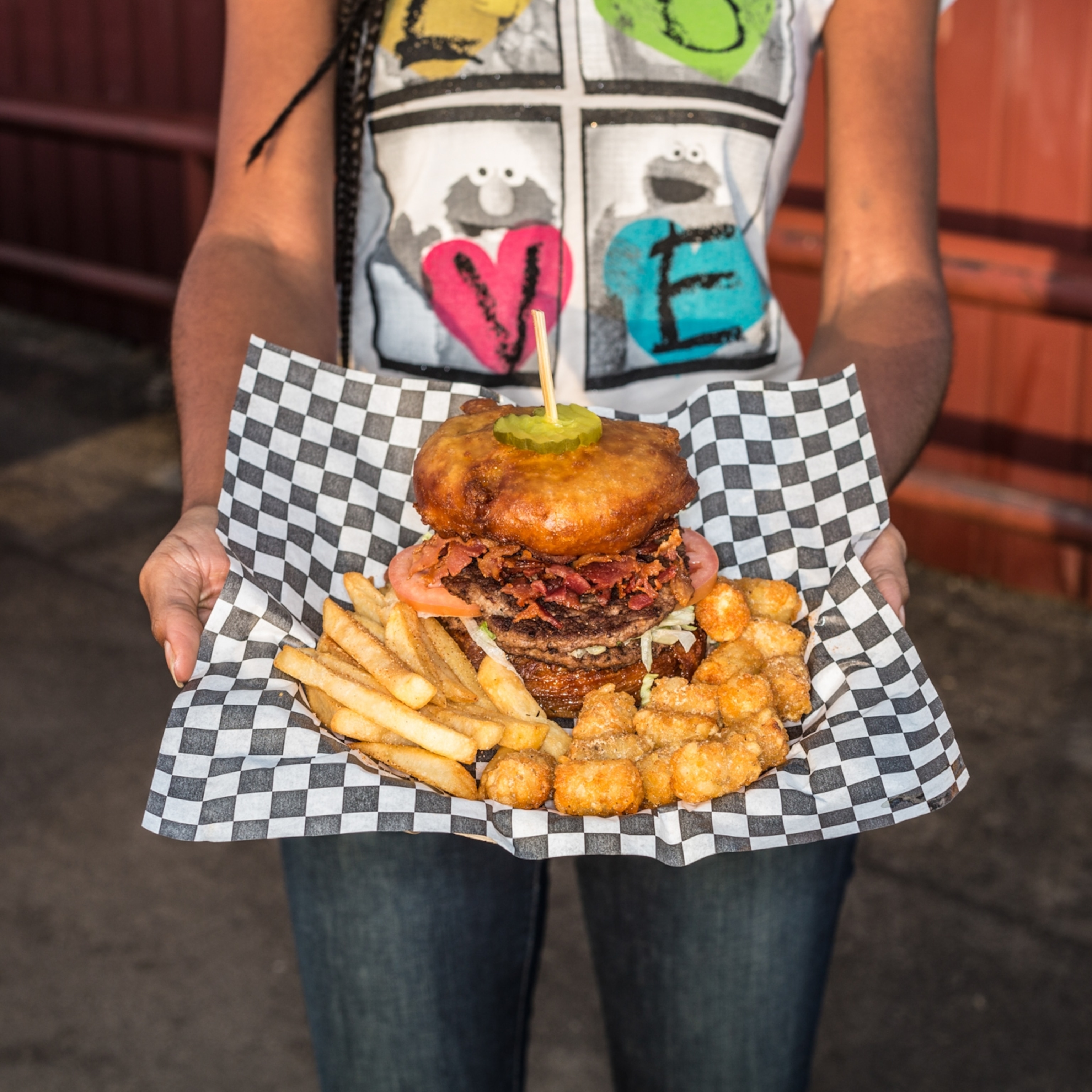
Food Packaging: Have Your Cake and Eat the Wrapper, Too
Food packaging tops the list of Things You Don’t Think About But Can Mess With Your Day, like cheap zippers or demagnetized credit cards. Ever worn a white shirt while opening a can of tomato soup? Or left the frozen-yogurt shop bummed out by the huge trash can full of landfill-bound plastic spoons and cups?
Food companies, on the other hand, spend a lot of time thinking about packaging as a way to communicate a company’s brand and make consumers love their products. More substantively than cosmetic details like labels or logos, a food’s container can suggest whimsy, environmental consciousness, or high technology. Packaging provides consumers’ first and last impressions of a product. It can enhance, or ruin, an eater’s experience.
And now, advances in food packaging technology will make food storage and preparation simpler. With consumers ever more obsessed with sleek technology, curbing food waste, and minimizing health risks to themselves and the environment, food packaging is undergoing a research renaissance. Here are the most interesting developments.
1. Edible packaging has been on designers’ minds since Willy Wonka bit into his teacup in the Everything Edible Room. 2015’s version is from KFC (yes, the fried-chicken chain). The company is trying an edible coffee-cup experiment in the U.K. Made from a hard cookie lined with heat-resistant white chocolate, the cup is KFC’s answer to reducing its landfill waste. It’s also a response to customers who are concerned with businesses’ environmental sustainability, which is often industry-speak for millennials, known to be loyal to products that support food-system sustainability and innovation.
But it’s not just millennials. Packaging Digest reports that 87 percent of all consumers in the developed world had at least “somewhat serious” concerns about global climate change (Earth to the other 13 percent, do you copy?). So edible packaging is marketable to people of all ages. It simply leaves no waste.
Last year, Stonyfield Organic introduced frozen yogurt “pearls” at four Whole Foods locations using WikiCells edible food wrappers, which were developed by Harvard scientist David Edwards. The skin has no flavor and can be rinsed and eaten with the yogurt (much like a grape) or it will break down quickly if peeled off and thrown away, eliminating the need for plastic spoons or wrappers on the go. It seems that people still want a layer of sanitary protection, though, because the spherical yogurts are still sold in containers. To try WikiCells without the packaging, visit Edwards’s WikiCafe in Boston.
Similarly, Loliware has sold gelatin-based edible drinking cups for two years, in flavors like Madagascar vanilla and tart cherry. (Summer is a perfect time to break these out for cocktails.) And edible cupcake wrappers were introduced last year too, made from potato starch. Even with these new advances, one decades-old edible wrapper continues to see great success—Japanese Botan Rice Candy, with an edible clear rice-paper wrapper.
2. Nonstick packaging will eliminate the 3-15 percent of wasted food left inside of bottles, those last trails of ketchup and mayonnaise that won’t come out no matter how hard you shake or squeeze. Liquiglide, developed in an MIT lab, is a “permanently wet slippery surface” that makes “viscous liquids slide easily.” Liquiglide estimates that if the sauces market used its coating, the planet would save 1 million tons of food waste each year. The coating is made from FDA-approved ingredients and, according to the company, does not affect the taste or smell of food. An added bonus: Liquiglide prevents carbonated beverages from going flat. (And really, there always seems to be an extra sip left at the bottom of my beer.)
3. Safety-enhancing packaging indicates when food is spoiling. It might seem this was solved long ago with the advent of the “Sell-By” date stamp. But after Harvard’s seminal report on the arbitrariness of sell-by dates (because of variances in transportation and in grocery store policies) and their contribution to America’s food-waste problem, the stamps are persona non grata in the food industry. Enter nanotechnology, the field dedicated to making electronic sensors tiny and inexpensive. According to a book published this year, scientists are working on food packaging—like plastic wrap—that is “active and intelligent” with tiny embedded sensors to determine when food is spoiling. The next step is to have that same wrap release preservatives to stave off spoilage. Of course, you could also rely on what has prevented humankind from food poisoning for millennia—the senses. If it smells bad, throw it away.
4. Packaging that disappears is an emerging market. MonoSol, LLC creates water-soluble bags made from food-grade ingredients for pre-portioned oatmeal or rice. When cooked, the bag dissolves, leaving only the food, ready to eat. MonoSol, LLC is marketing this to professional kitchens too, as a way to pre-measure ingredients and ensure consistency regardless of who is cooking. A design firm in Sweden imagines three disappearing (or at least, quickly biodegrading) packages. An oil bottle made from caramelized sugar, coated with wax, that cracks open like an egg; a smoothie container made from seaweed that “will wither at the same rate as its content,” and a peelable beeswax package for rice or other dry goods.
5. Super-compressed packaging serves the increasing number of city dwellers, who generally have tiny kitchens and no storage space. Additionally, many people living in urban areas walk home from grocery stores, and they need lighter and smaller packages. The days of the enormous Styrofoam serving bowl with tiny bits of dehydrated noodles on the bottom will soon be over. The same Swedish design firm is working on a compressed tiny package that expands into a full-size bowl when hot water is added.
Food-packaging designers are hard at work to make groceries green, dense, sleek, and functional. In the meantime, I recommend one grocery section offering no-waste, compact, spoilage-alerting packaging in dizzying varieties: the produce aisle.








